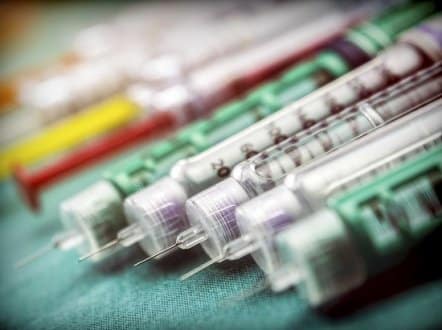Introduction
When diabetes was first able to be properly treated, the methodology involved the diabetic being administered an injection of insulin, much as it does today. Fortunately, we no longer have to rely on dog pancreas extracts to produce our insulin, as was the case in the early part of the last century when diabetes treatments were first formulated. The reason this treatment methodology persists to this day is because insulin is a hormone that is destroyed by the low-pH environment of the stomach. This necessitates a subcutaneous injection rather than pills or tablets that can be taken orally.
In the last 25 years, technology has come to the aid of those who must inject insulin. Rather than having to prepare an injection using a standard vial of insulin and practice aseptic technique to prevent infection, several pre-filled, autoinjector pens for insulin have come on the market, beginning with NovoPen by Novo Nordisk in 1985.
Insulin pens are convenient, accurate and much easier to use than a traditional syringe. It’s no wonder they’re very popular all over the world. There are many types of insulin pens on the market – read on to find out which one is right for you.
Components of an insulin pen
- Needle
- Cartridge containing insulin
- Dosing knob (to select number of units for delivery)
- Injection button
Differences between durable and pre-filled pens
- Durable pens are designed for reuse and are equipped with a disposable cartridge. Once the insulin is consumed, another cartridge is inserted.
- Disposable, prefilled pens are shipped containing a fixed amount of insulin. Once the drug is consumed, the entire pen assembly is disposed of and a new one is used.
- Pre-filled, disposable pens generate more environmental waste, but there is a lesser degree of risk of infection and they are more convenient to use and store. They are also much more convenient for travelling, as separate cartridges and components don’t need to be transported along with the injection device.
Insulin pen storage
New, unopened insulin pens require storage in the refrigerator at between 2 and 8 degrees Celsius. Once a device is currently in use, it must be kept at room temperature and out of direct sunlight. Though this varies by brand, most insulin pens can be stored for approximately 28 days.
It’s crucially important to check the expiry date on insulin pens. This will depend on the type of insulin that the pen contains. Do not use expired insulin as the expired product can differ in dosage or efficacy than the non-expired product, which can lead to miss-dosing and serious injury.
Insulin pens should never be stored with the needle attached, even if it is a new needle. This can affect the cleanliness and sterility of the needle, interfere with the insulin dose given, and increase the risk of infection.
How do I know which insulin pen is right for me?
There are different insulin pens available on the market. Choosing the right one for you depends on several factors:
- Type and brand of insulin available in the particular pen
- Amount of insulin the pen can hold
- Dosage increments
- Suitable material and durability for reusable pens
- Clarity of the indication on the pen for remaining insulin levels
- Ability to correct dosage levels
- Size of the numbers on the dosing dial if you have visual limitations
- Level of manual dexterity required to successfully use the pen (if you have motor skill limitations)
It’s important to note that two separate insulins cannot be mixed in a prefilled syringe. If you require a mixture of more than one insulin product per injection, an insulin pen employing a prefilled cartridge or a disposable pen may not be suitable for you.
Needle thickness and length
An important factor to consider is the size of the needle that’s attached to the insulin pen. This is known as the needle’s gauge. A larger number indicates a thinner, smaller needle. For example, an 18-gauge needle is substantially thicker and larger than one that is 25-gauge.
A lower-gauge (thicker) needle will be more painful during the injection process but can deliver a dose of insulin faster than one of a higher (thinner) gauge. You should consult closely with your prescribing physician to determine which needle type is appropriate for your physiology and pain tolerance. These decisions can then be applied to choosing the correct insulin pen.
Cleanliness and sterility
Since the needle on the tip of the insulin pen punctures the skin, it is essential that it be kept clean and free of contaminants. Do not touch the needle to other surfaces. Do not touch the needle with your fingertips prior to injection. The general rule for insulin pen needles is if you are unsure whether it is sterile, do not use it. When it comes to needles: if in doubt, throw it out.
—
Disclaimer: Please note that the contents of this community article are strictly for informational purposes and should not be considered as medical advice. This article, and other community articles, are not written or reviewed for medical validity by Canadian Insulin or its staff. All views and opinions expressed by the contributing authors are not endorsed by Canadian Insulin. Always consult a medical professional for medical advice, diagnosis, and treatment.


